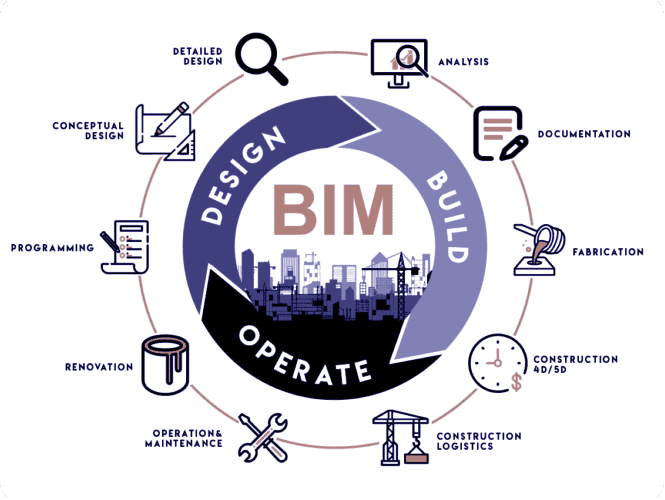
BIM for Construction
In the fast-paced realm of construction services, staying ahead is not just an option; it's a necessity. One revolutionary tool that has reshaped the landscape is Building Information Modeling (BIM). Let us delve into the transformative potential of BIM for Construction Services, exploring how this technology is revolutionizing the industry.
Embracing the Future: BIM Basics
BIM, short for Building Information Modeling, is not just a buzzword; it's a game-changer. This advanced digital representation of the physical and functional characteristics of a building allows for a holistic approach to construction projects. From design and planning to execution, BIM streamlines the entire process, fostering collaboration and efficiency.
Navigating Complexities: BIM's Impact on Project Management
- Enhancing Collaboration and Communication: In the construction arena, communication is key. BIM acts as a unified platform, bringing together architects, engineers, and contractors. Real-time collaboration ensures that everyone involved is on the same page, reducing errors and saving valuable time.
- Precision in Planning and Execution: BIM provides a 360-degree view of the project, enabling meticulous planning. This precision extends to execution, minimizing unexpected challenges during construction. The result? Projects that adhere to timelines and budgets, elevating client satisfaction.
Building a Sustainable Future: BIM and Environmental Impact
- Optimizing Resource Utilization: Efficiency goes hand in hand with sustainability. BIM's ability to optimize resource utilization contributes significantly to eco-friendly construction practices. From material procurement to waste reduction, every aspect is carefully considered, aligning with the growing demand for sustainable solutions.
- Energy-Efficient Designs: With BIM, architects can simulate and analyze the energy performance of a building during the design phase. This proactive approach allows for adjustments that enhance energy efficiency, contributing to a greener and more sustainable future.
Why Choose Our BIM for Construction Service?
- Expertise and Experience: Our team comprises seasoned professionals with extensive expertise in BIM implementation for construction projects. We have successfully executed numerous projects across diverse sectors, showcasing our ability to tailor BIM solutions to meet the unique needs of each client.
- Cutting-edge Technology: We leverage the latest BIM tools and technologies to ensure our clients benefit from the most advanced features and functionalities. Staying at the forefront of technological advancements allows us to deliver superior results and maintain a competitive edge in the industry.
- Customized Solutions: Recognizing that each construction project is unique, we offer customized BIM solutions tailored to the specific requirements and challenges of our clients. Our commitment to understanding the intricacies of each project enables us to provide solutions that maximize efficiency and deliver optimal results.
- Comprehensive Support: From project initiation to completion, our BIM services encompass the entire project lifecycle. We provide comprehensive support, ensuring that our clients receive ongoing assistance and expertise at every stage of the construction process.
- Cost-effective Solutions: We understand the importance of cost-effectiveness in construction projects. Our BIM services are designed to optimize costs by minimizing errors, reducing rework, and streamlining project workflows. This commitment to efficiency translates into tangible cost savings for our clients.
- Client-Centric Approach: Our client-centric approach is at the core of our service delivery. We prioritize open communication, collaboration, and responsiveness to client needs. By actively involving our clients in the decision-making process, we ensure that the final BIM solution aligns seamlessly with their vision and goals.
Overcoming Challenges: BIM Implementation Strategies
- Training and Education: Adopting BIM requires a skilled workforce. Investing in training and education ensures that teams can harness the full potential of this technology. The initial investment pays off in increased efficiency and improved project outcomes.
- Integration with Existing Systems: Smooth integration is crucial for a seamless transition to BIM. Compatibility with existing software and tools ensures that the learning curve is minimal, maximizing productivity from the start.
Conclusion
In conclusion, the adoption of Building Information Modeling (BIM) for construction projects represents a paradigm shift in the industry, offering a holistic approach to project management.
Choosing our BIM services ensures access to a team of experts, cutting-edge technology, and tailored solutions that contribute to the success of your construction projects. Embrace the future of construction with our BIM services and witness the transformative impact on efficiency, collaboration, and overall project outcomes.

